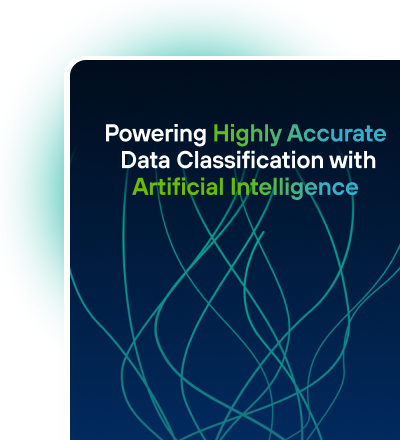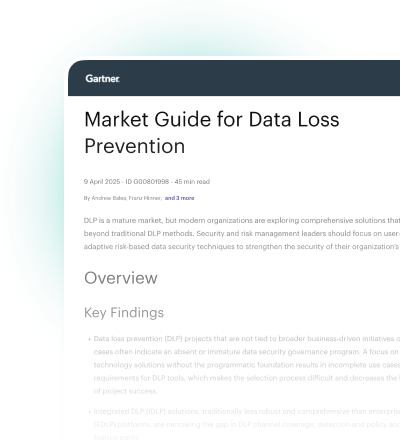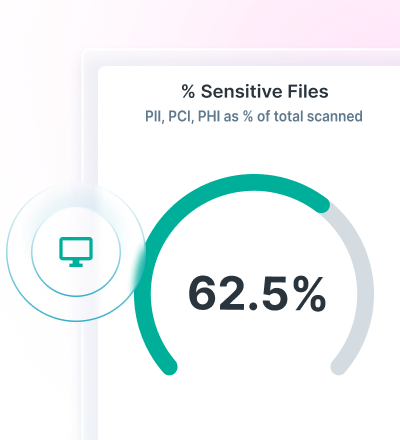
Get Visibility and Control Over Sensitive Data
Shine a light on dark data with extensive data discovery and highly accurate classification.
Forcepoint DSPM software scans any data source and uses proprietary AI Mesh technology to identify, categorize and remediate high-risk data.
It’s a perfect solution if your security teams struggle with:
Large amounts of shadow data
Over-permissioned data
GenAI data leakage risks
Unidentified data locations


Pinpoint Accuracy and Transparent Reporting
Enda Kyne, CTO at FBD Insurance, says that DSPM and DDR has been embraced by his IT security and data protection teams for their ability to control critical data and report activity to regulators.
Forcepoint DSPM Software Leads the Pack
Forcepoint is the only Data Security Posture Management vendor that uses AI Mesh technology to deliver highly accurate data classification. Read the full comparison chart to learn why organizations trust the leading data security provider to discover and catalogue data and remediate risk at scale.
Read Full Comparison20%
40%
60%
80%
100%
Forcepoint
Traditional Vendor
Data Governance
Vendors
Forcepoint DSPM 解决方案 vs. 竞品
Forcepoint | 传统供应商 | 数据治理供应商 | |
数据分类
| |||
数据发现
| |||
可扩展性
| |||
分析套件:
| |||
事件分析
| |||
自定义和可扩展性
| |||
基于风险的方法
|
产品比较是基于截至 2024 年 5 月 7 日,同一供应商提供的产品内功能和跨产品组合集成。 产品比较不包括与第三方供应商的集成。 功能比较基于截至 2024 年 5 月 7 日的每个供应商最新版本和现代版本。 信息基于截至 2024 年 5 月 7 日,从公共网站与论坛、分析师文章和产品数据表收集的数据。
为什么 Forcepoint DSPM 是顶级安全工具
提升数据可见性
深入监控云端和本地环境中的数据,以便跟踪和管理敏感数据,不受其所在位置限制。
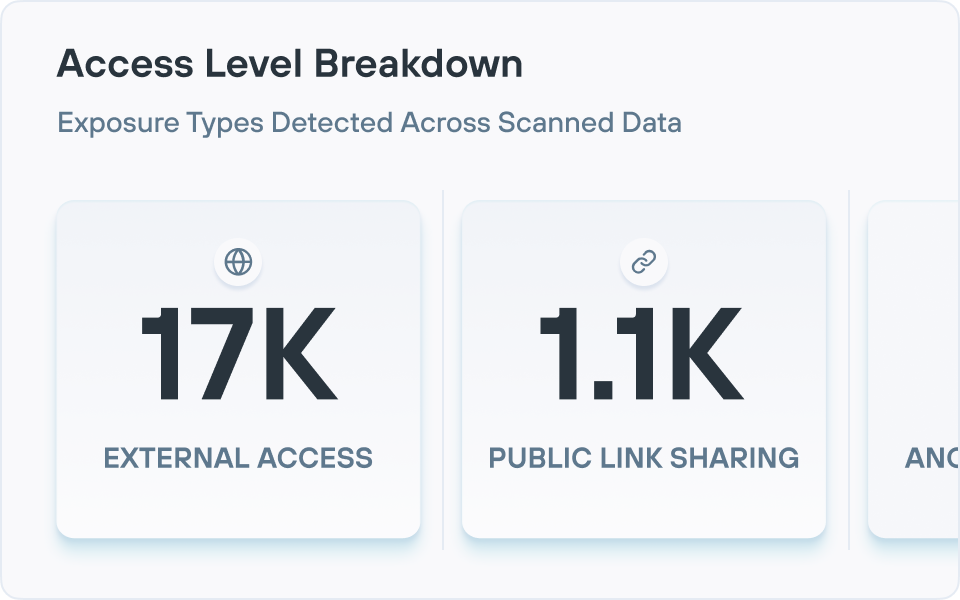
借助 AI 发现和分类
运用高度准确的 AI Mesh 技术实现高效、可靠的数据发现和分类,减少误报并提高事件警报的准确性
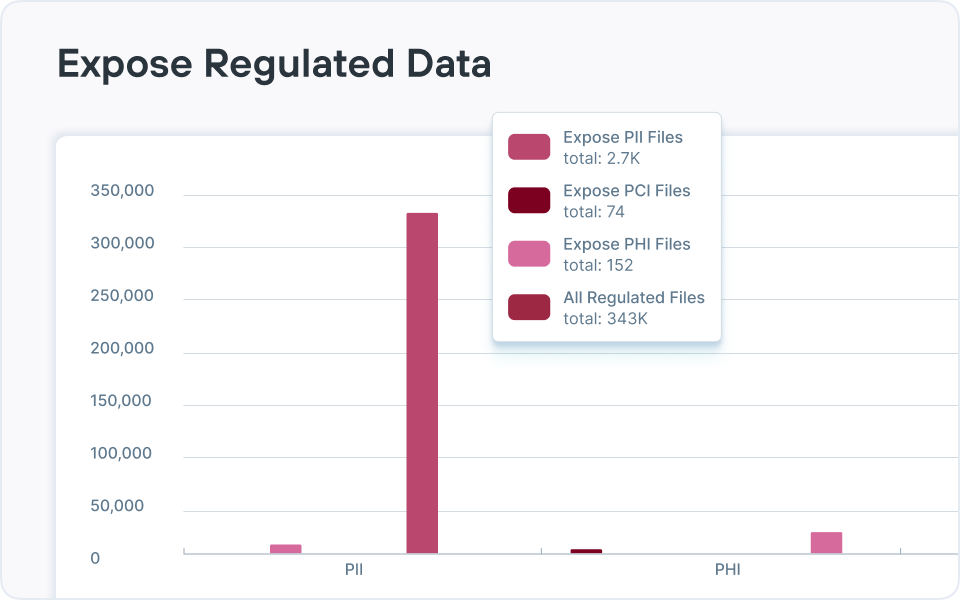
主动化解风险
借助可实施的洞察,您能够管理权限,移动放置错误的数据,并解决数据主权、访问权限以及重复或过时琐碎 (ROT) 数据问题。
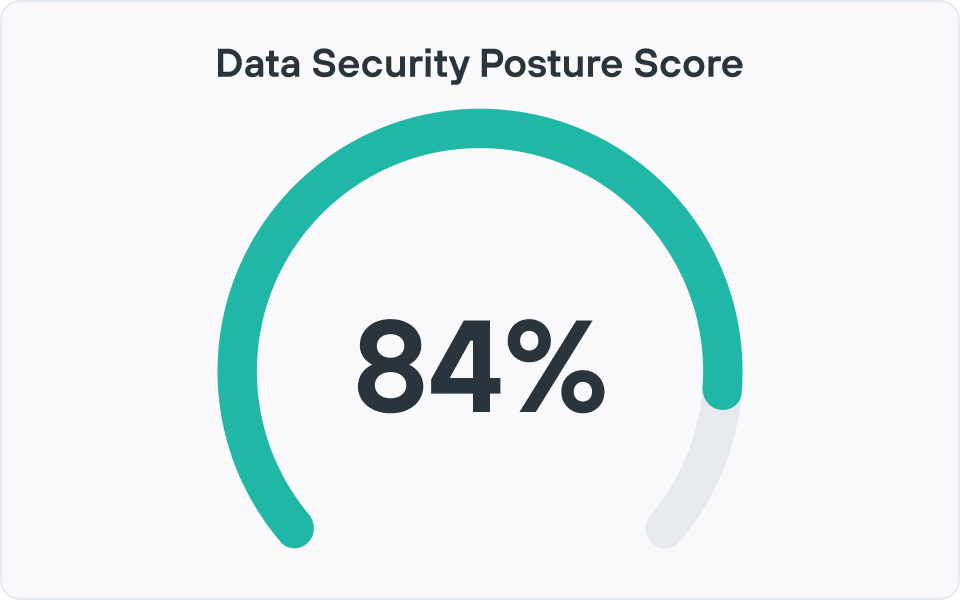
自动化合规管理
利用自动化简化合规流程,确保始终符合不断变化的法规要求,减少人工投入。
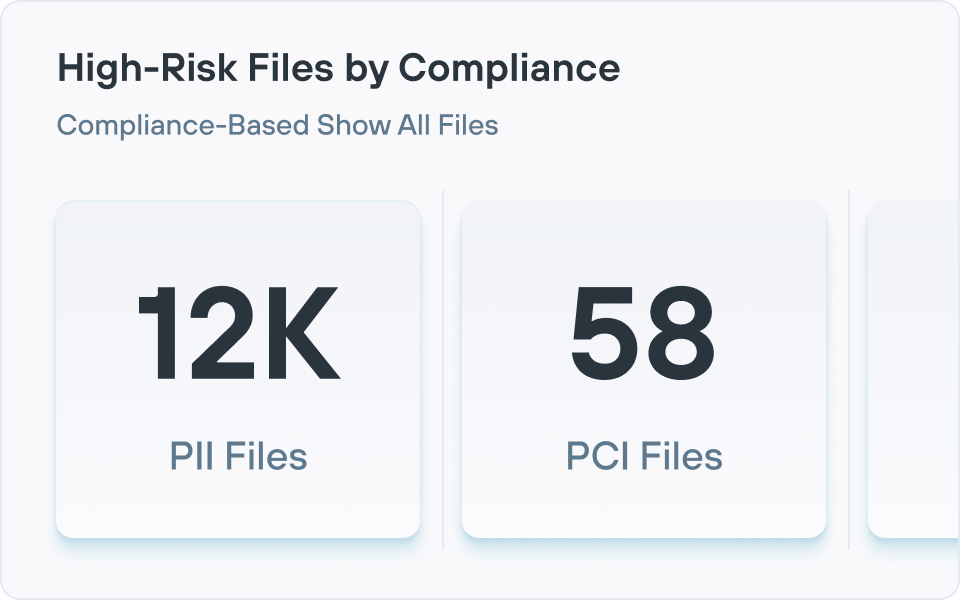

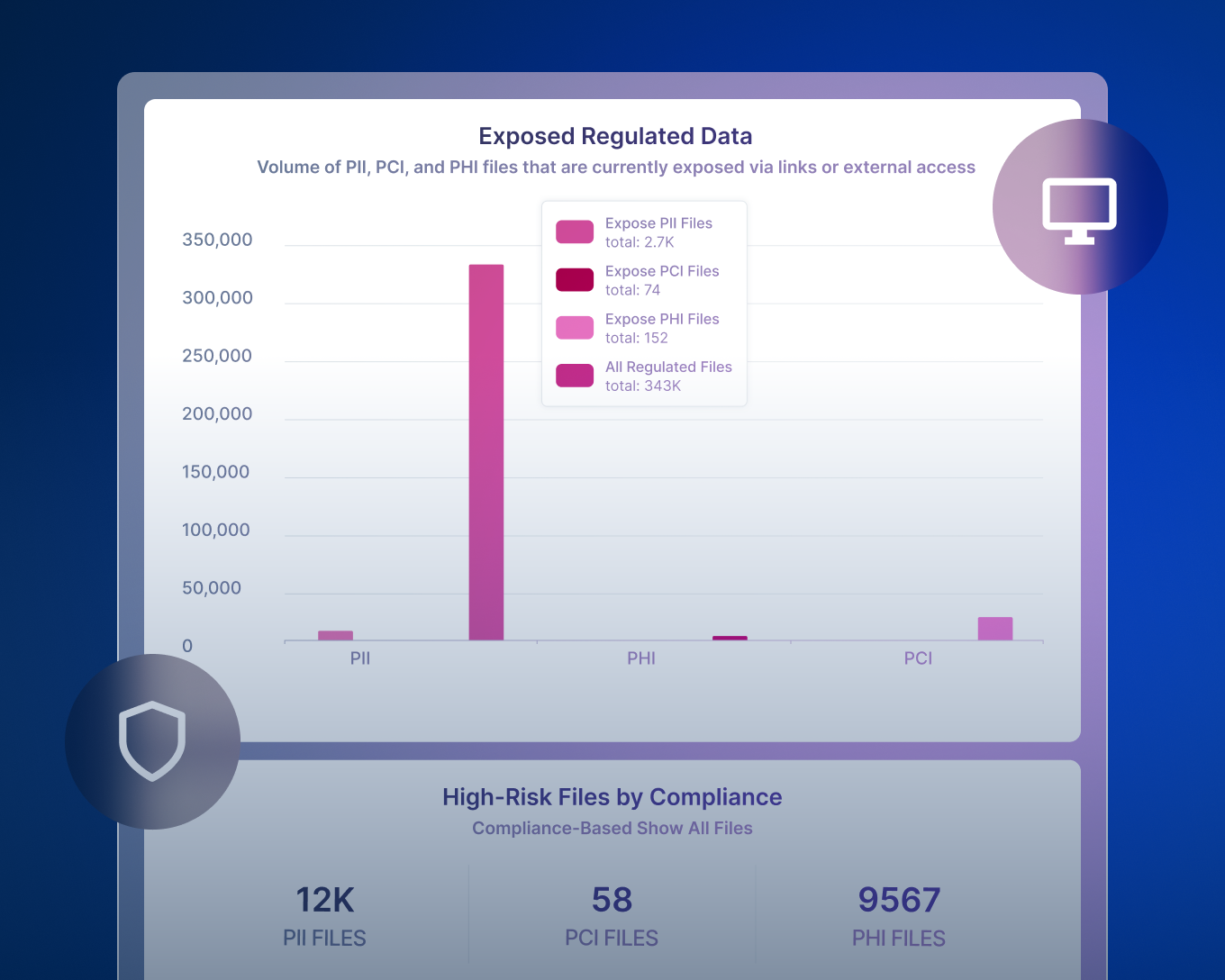


能够集成 DLP、DSPM 和 DDR,实现数据发现、分类、保护和补救。

提供有效的风险报告,使您能够发现 ROT(冗余、过时、琐碎)数据、过度授权的数据、数据主权问题以及许多其他使整体数据态势面临风险的问题。

提供对所有 GenAI 应用的数据准备情况的可见性与控制。 它还能够确保 Copilot 和 ChatGPT Enterprise 的使用安全。
What Real Customers Are Saying
What Real Customers Are Saying
"As part of Forcepoint’s broader data security ecosystem, DSPM has integrated seamlessly with our existing solutions. It’s an essential component of our overall data security strategy."
Indonesia Financial Group (IFG)


您的数据存在风险吗?
一份能够主动发现数据威胁的数据风险评估,无论是未分类的敏感文件还是过度授权的用户。借助 Forcepoint 提供的免费数据风险评估,观看 DSPM 的运作方式,并了解您的数据是否安全。
由分析师所推荐。
用户认可。
Forcepoint 一直被用户和行业分析师评为顶级数据泄露防护软件和数据安全软件提供商之一。
Forcepoint 在 IDC MarketScape: Worldwide DLP 2025 Vendor Assessment 中荣获“领导者”称号。
Forcepoint 连续第二年被 Frost & Sullivan 评为 2024 年全球 DLP 年度公司。
Forcepoint 荣获 2025 年第一季度 The Forrester Wave™: Data Security Platforms 表现卓越的企业。
实施 Data Security Posture Management 最佳实践
Frequently Asked Questions
What is Data Security Posture Management (DSPM)?
DSPM is a security solution that enables enterprises to discover and classify structured and unstructured data across file storage locations, such as cloud applications or on-premises. It also helps to proactively address incident remediation.
How do DSPM solutions work?
Structured and unstructured data is littered across Software-as-a-Service (SaaS) applications, Infrastructure-as-a-Service (IaaS) locations and on-premises storage, making it difficult to get a handle on where the most important and sensitive information is. DSPM provides the visibility and control needed to secure this complex environment.
How does DSPM software’s data discovery capabilities work?
DSPM continuously discovers data across cloud, network and on-premises storage to uncover and catalog every piece of data your organization has. Finding sensitive data is the crucial first step in protecting it. DSPM solutions scan your entire data ecosystem such as:
- Cloud platforms (AWS, Azure, GCP)
- SaaS applications (Microsoft 365, Salesforce)
- On-premises storage and databases
Modern DSPM software maintains continuous visibility as data moves and changes through built-in functionality or solution integrations.
What data classification and risk assessment abilities does a DSPM solution provide?
Once discovered, data must be categorized and evaluated for risk exposure. Modern DSPM solutions typically employ advanced AI-driven techniques in this critical phase:
- AI detectors identify regulated information (SSNs, credit cards, health records) and proprietary data using sophisticated recognition capabilities that surpass traditional pattern matching approaches.
- AI summarizers analyze contextual signals like location, access patterns, user behavior and business relevance to understand data meaning and usage.
- Rich classification assignment provides comprehensive data insights that extend well beyond basic Public/Internal/Confidential/Restricted labels, delivering detailed information about file content, business context, regulatory implications and specific risk factors.
These advanced classifications are then combined with protection controls, access permissions and compliance requirements to generate dynamic risk scores. AI-powered classification has become a baseline functionality for usable DSPM platforms, with modern solutions leveraging multiple AI types working together including GenAI, deep neural network classifiers and specialized detection engines to continuously improve both classification accuracy and risk assessment.
How does a DSPM platform help organizations manage and remediate risk?
Identifying issues without resolution creates little value. Modern DSPM platforms bridge this gap with customizable controls that adapt to your organization's unique needs and challenges. These controls include permissions management to implement the Principle of Least Privilege (PoLP), ensuring users only access files required for their tasks and addressing over-permissioned or publicly accessible data. Additional capabilities include data mapping to properly categorize sensitive information, mislocated data remediation to address files stored in inappropriate repositories and data archiving/deletion workflows for managing at-risk files past retention periods or classified as ROT (redundant, obsolete, trivial).
How does reporting and analytics work within DSPM software?
DSPM solutions include reporting and analytics tools that provide visibility into an organization's overall data security status. These reporting capabilities typically feature dashboards showing where sensitive data exists across environments, highlighting specific risk factors such as ROT (redundant, obsolete, trivial) data, over-permissioned files, mislocated information and duplicated content. Security teams can use these insights to track metrics over time and prioritize remediation efforts where they'll have the greatest impact.
What are the different ways you can deploy a DSPM solution?
DSPM solutions offer flexible implementation options:
- Cloud-native SaaS for rapid deployment
- Hybrid models for sensitive environments
- On-premises for control over data sovereignty
- Agentless architectures to minimize overhead
Most enterprises start with their most critical data repositories and expand coverage incrementally.
How does AI and automation enhance Data Security Posture Management?
Automation enables continuous, large-scale data discovery and scanning across enterprise environments. Organizations can now automatically classify data in real-time as it's created, moved or modified—eliminating the delays and gaps inherent in manual reviews. Artificial intelligence's primary value lies in delivering highly accurate data classification while reducing false positives. AI brings the precision needed to confidently distinguish between truly sensitive data and benign information that might trigger traditional rule-based systems. For DSPM solutions to confidently incorporate these capabilities, modern solutions must handle a wide range of file types, from PDFs to video, as well as understand an even broader array of data fields to assign correct classifications and adjust for compliance requirements. This includes leveraging GenAI capabilities, deep neural network classifiers and other predictive AI technologies working together.
What are the key benefits organizations could get from implementing a DSPM platform?
The benefits of Data Security Posture Management can boil down to four outcomes:
- Increase productivity
- Cut costs
- Reduce risk
- Streamline compliance
Does DSPM integrate with other security technologies?
DSPM rarely operates in isolation. Most organizations integrate it with complementary security technologies to create a comprehensive data protection strategy. The insights DSPM software provides about data location, sensitivity and risk naturally enhance other security tools such as:
- Data Detection and Response (DDR)
- Data Loss Prevention (DLP)
- Cloud Access Security Broker (CASB)
- Identity and Access Management (IAM)
- Cloud Security Posture Management (CSPM)
How does DSPM differ from legacy data classification tools?
Unlike traditional tools that work with known data repositories using predefined rules, DSPM continuously discovers both known and unknown data across environments, leveraging AI for more accurate classification and providing context about access patterns and security controls.
What organizational roles should be involved in DSPM implementation?
Because successful DSPM deployment requires collaboration beyond security teams, many organizations establish a data risk committee to regularly review DSPM insights and coordinate remediation efforts. This could include IT infrastructure managers, data governance specialists, compliance officers and business unit representatives who understand departmental data value.
How can organizations measure DSPM ROI beyond compliance?
You can track metrics such as reduction in sensitive data exposure (attack surface reduction), time savings in data discovery processes, improvements in mean-time-to-remediate incidents and reductions in storage costs from eliminating redundant or obsolete data.



